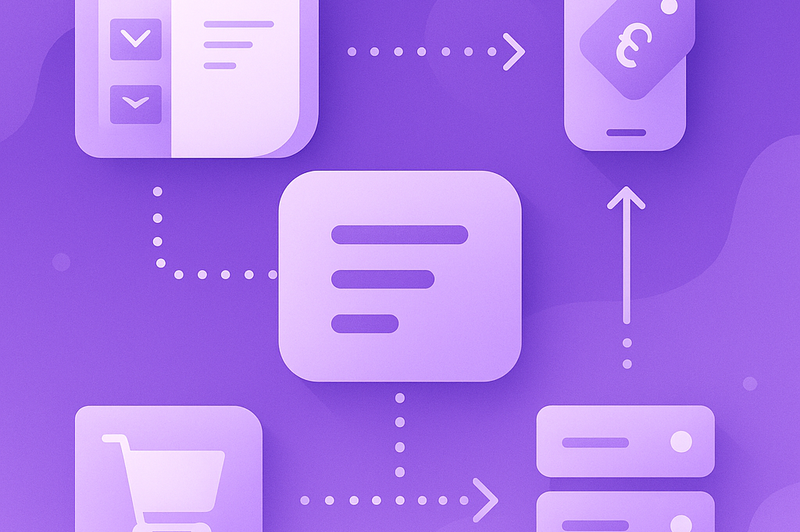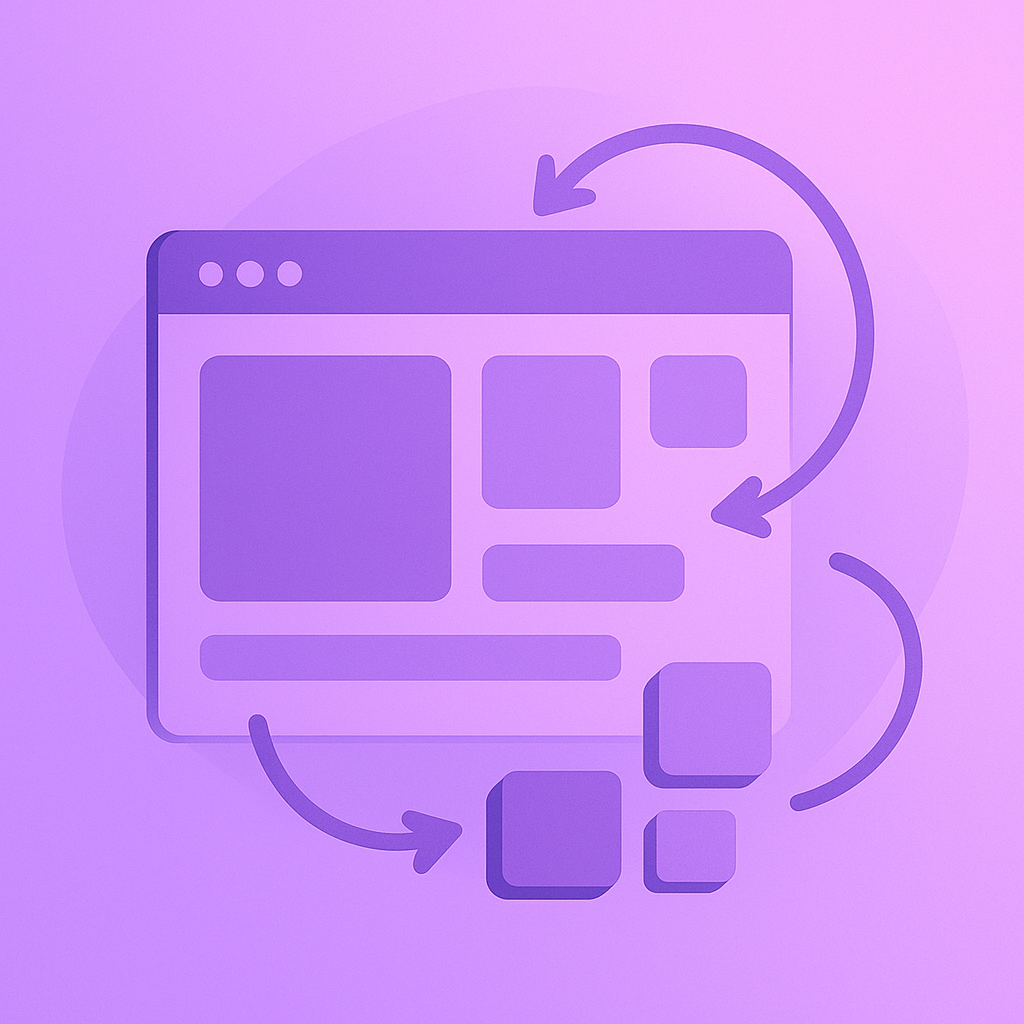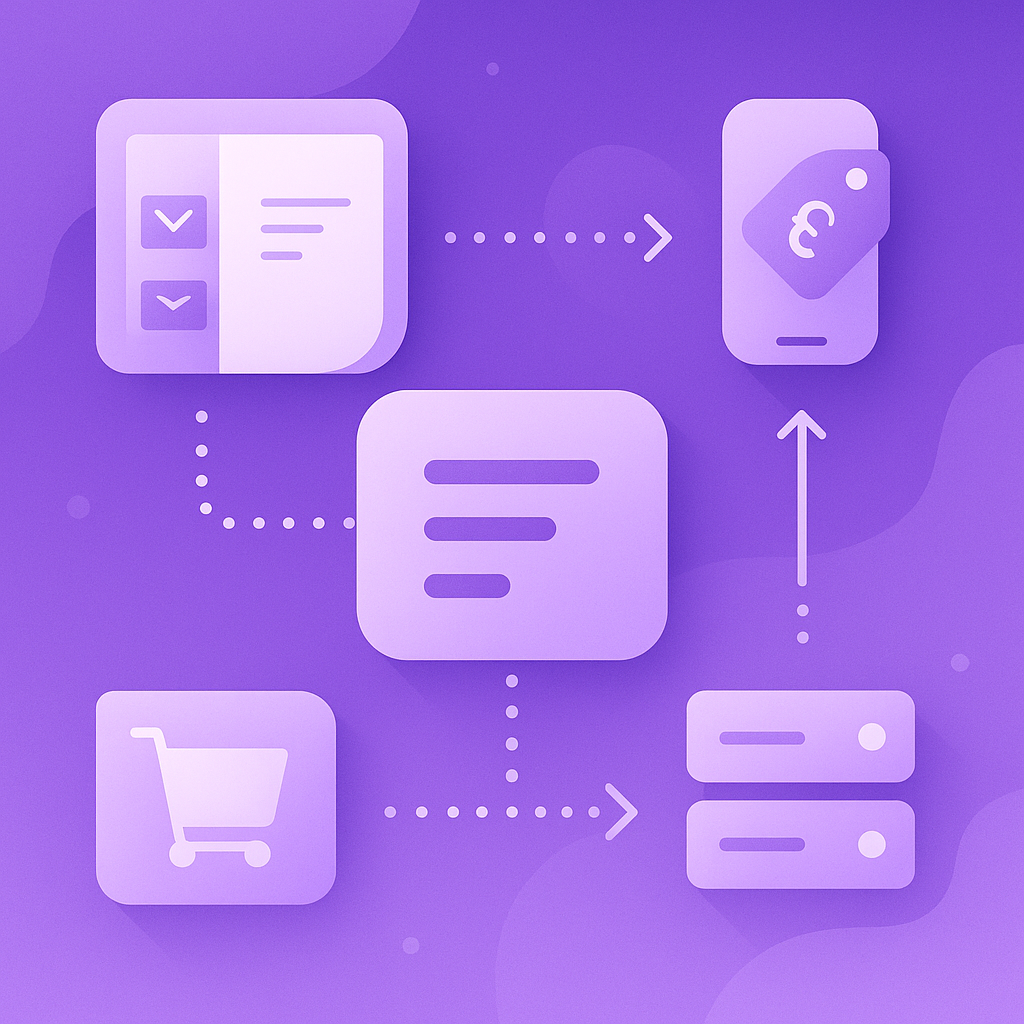E-commerce architecture is evolving rapidly. Many online retailers are moving away from the old “monolithic” model – where the front-end and back-end are tightly coupled – toward more flexible setups. One of the biggest shifts is the rise of headless commerce, which essentially decouples the online store’s front-end from its back-end systems. In a headless configuration, the customer-facing “head” (the website or app UI) is separated from the commerce engine (product database, checkout, etc.), and they communicate via APIs. This means the storefront can be updated or redesigned without interfering with core backend functions. In short, headless commerce gives brands a modular, API-driven architecture that allows rapid changes to the user experience while keeping the underlying business logic stable. It’s analogous to headless CMS in content management – providing the freedom to deliver content across any channel without being confined by a single templating system.
Why Headless Is on the Rise
Several trends are driving the momentum behind headless commerce. First, customer expectations have never been higher. Shoppers today demand lightning-fast load times, personalised experiences, and a seamless journey across devices and channels. In fact, around 40% of online shoppers won’t wait more than 3 seconds for a site to load before abandoning it. They also expect brands to recognise their needs and offer relevant content – one survey found 91% of consumers prefer shopping with brands that provide personalised offers and recommendations, something that headless architectures can facilitate. Meeting these expectations often requires more flexibility and speed than a traditional all-in-one platform can offer.
Secondly, omnichannel retailing has become the norm. Retailers want to engage customers on websites, mobile apps, social platforms, smart kiosks, even IoT devices – all with a consistent experience. Headless commerce enables this by allowing a single backend to feed multiple frontends via APIs. For example, with a headless approach you can create unified omnichannel experiences and integrate new technologies (like AI-driven recommendations) across any device in real time. This agility to deliver content and products on any channel is a key reason brands are adopting headless.
Another factor is platform support. Even Shopify, known for its turnkey storefronts, has embraced headless commerce by introducing Hydrogen and Oxygen – its official headless stack. Hydrogen is a React-based framework with pre-built commerce components and hooks optimised for Shopify’s API, while Oxygen is a hosting platform for deploying Hydrogen storefronts for optimal performance. In other words, Shopify now provides the tools to go headless, signalling that decoupled architecture is the future of high-end ecommerce. Merchants on Shopify Plus can leverage Hydrogen to build custom, blazing-fast storefronts, and host them on Oxygen or other platforms as needed.
Lastly, core business motivations are fueling the shift: performance, design freedom, and future-readiness. Headless stores can be incredibly fast and responsive, helping meet Google’s Core Web Vitals and boosting SEO. They offer total creative control over the UX, free from the constraints of off-the-shelf themes. And they are inherently ready for a multi-channel, API-driven world. It’s telling that 67% of companies are changing or planning to change their commerce architecture in order to future-proof their businesses. Headless commerce provides a path to do exactly that.
Benefits of Headless Commerce
Going headless can deliver a range of concrete benefits for online retailers. Here are some of the key advantages:
-
Blazing Speed and Performance: Headless commerce sites often load faster and feel more responsive than traditional sites. By cutting out the bloat of a one-size-fits-all theme and using modern frameworks, brands can achieve significantly better page load times and frontend performance. This translates to improved conversion rates and search rankings.
-
Full Control over Design and UX: With the front-end decoupled, merchants have total creative freedom to build unique shopping experiences. You’re not limited by the templating or technology of a platform’s theme. Developers can treat each page as a blank canvas, using any programming language or framework, and create highly customised designs and interactive features.
-
Seamless Integrations and Personalisation: Headless setups excel at integrating with third-party services and tools. Because everything is API-driven, it’s easier to plug in best-of-breed solutions for content management, search, customer reviews, CRM, or any other functionality. For instance, a brand could use Shopify for commerce, Contentful or Sanity as a headless CMS for managing rich content, Algolia for lightning-fast search, and so on – all stitched together in a unified front-end experience. This composable approach means you’re not stuck with the native features of one platform; you can choose the optimal providers for each aspect of your business. It also enables more advanced personalisation.
-
Omnichannel and Multi-Region Agility: Because the backend is exposed via APIs, the same commerce logic can feed numerous customer touchpoints. This is ideal for brands with multi-channel or international strategies. You might run a content-rich website, a fast mobile app, a point-of-sale screen, and even a voice assistant skill – all drawing on the same product catalogue and customer data.
-
Better Scalability and Stability: Decoupling can also bring technical scalability benefits. The front-end application can be optimized and scaled independently (e.g. hosted on a high-performance CDN or edge network), and the backend Shopify engine handles commerce transactions with Shopify’s robust infrastructure. This separation often means the site can handle higher traffic loads more gracefully. Many brands go headless after experiencing scaling issues with a monolithic setup. A case in point: Gymshark, a fast-growing fitness apparel brand, saw its traditional Shopify store crash under heavy traffic during Black Friday one year. They responded by rebuilding with a headless architecture, using Shopify for the backend and a React-based front-end, plus other API-driven services. The result was a far more resilient and scalable store – Gymshark could handle peak loads without downtime, and the new setup also improved their site reliability and performance globally.
(Of course, it’s worth noting that headless does introduce more complexity – we’ll discuss later why it may not be right for everyone. But for those who can harness it, the benefits above are game-changing.)
Who Should Consider Going Headless
Headless commerce isn’t a silver bullet for every store – but it can be transformative for certain types of merchants. Generally, medium to large brands with complex or ambitious requirements are the best candidates. Here are some scenarios where going headless on Shopify makes sense:
-
Content-Rich Brands: If your site is content-heavy – for example, you run an online store that doubles as a media-rich lookbook, magazine, or community – headless will give you the tools to shine. You can integrate a powerful CMS and deliver immersive content alongside commerce. Fashion and lifestyle brands often fall in this category. A great example is a luxury fashion retailer that wanted to blend editorial storytelling with shopping: by adopting headless Shopify with a CMS, they built an immersive site where videos, blogs, and product data all sync seamlessly, resulting in a richer customer experience.
-
Brands with Complex Catalogs or Custom Features: Maybe you offer hundreds of product variants, or you need advanced product configuration and search capabilities. A traditional Shopify theme can struggle with such complexity or require many third-party apps (which can slow down your site). Headless lets you build exactly what you need. if you want to incorporate emerging tech like AR/VR try-ons or interactive product builders, headless is an enabler. Gymshark’s team chose a headless approach with Shopify Plus and Contentful CMS to unlock such features – their site includes things like virtual try-on for fitness gear and personalised content sections, helping drive a 200% increase in conversion rates after the switch. In short, when you have unique functionality in mind, headless gives your developers a free hand to build it.
-
Multi-Market or Multilingual Businesses: Operating in multiple countries or languages adds a layer of complexity that headless is well suited to handle. With a traditional setup, managing several regional Shopify stores or a multi-language site via theme translations can become cumbersome. Headless architecture, on the other hand, allows you to use localisation services or connect multiple Shopify backends to one front-end app that orchestrates content for each locale. If you need custom regional experiences (different content, currencies, or integrations per market), a headless build will offer far more flexibility. As noted, brands like Sennheiser leveraged headless to quickly spin up localised storefronts in new markets, something that would be slower with a one-size-fits-all theme. For any brand eyeing international growth or complex localisation, headless can significantly streamline the process.
-
High-Performance / UX-Obsessed Brands: Some merchants simply want to deliver the absolute best online experience – maximum speed, pixel-perfect design, and the ability to iterate quickly. If your brand identity relies on pushing creative boundaries in web design or you’re in a highly competitive niche where site experience is a key differentiator, headless is a strong option. You might have an in-house tech team or work with an agency to continually A/B test and improve the UI. Headless empowers this because you’re not limited by a theme’s structure; developers can use modern frameworks (like React, Next.js, etc.) to implement cutting-edge front-end techniques. The result can be a site that feels as smooth as a native app and stands out from cookie-cutter templates. Many digitally native brands that reached a certain scale (often on Shopify Plus) have chosen headless for this reason – to gain that edge in performance and UX customisation. If you have the resources and vision to build a bespoke front-end, the headless route will let your Shopify store truly reflect your brand’s ethos rather than looking like a standard template shop.
Importantly, making a success of headless commerce usually requires strong development capabilities. You’ll need developers (either in-house or via an agency) who are proficient in building and maintaining a custom front-end and integrating various systems. Working with an experienced Shopify development agency like Wolfdev can be ideal here – our team has the expertise to plan, build, and optimise headless Shopify stores for clients. Headless projects involve more upfront planning and investment, so having Shopify experts to guide the architecture, ensure all APIs and integrations run smoothly, and optimise for speed is invaluable. If your brand fits the profiles above and you’re striving for that next level of ecommerce experience, it’s worth consulting professionals (such as Wolfdev) to assess a headless strategy.
Who Might Want to Stick with Traditional Shopify
While headless commerce is exciting, it’s not the right choice for everyone. Many businesses – especially smaller or simpler operations – will be better served by Shopify’s traditional all-in-one approach. Here are scenarios where sticking with a standard Shopify setup makes sense:
-
Smaller Catalogues or Simple Product Offerings: If you run a straightforward store (say a small catalogue of products with basic variants) and don’t require elaborate user experiences, the out-of-the-box Shopify storefront is likely sufficient. Shopify’s themes are quite capable for standard use cases, offering clean designs and essential features with minimal configuration. For a merchant whose main goal is to get online quickly and start selling, the traditional route is faster and more cost-effective. You can choose a pre-designed theme, do some branding customisation, and launch without writing code – perfect for lean teams or solo entrepreneurs who need to focus on the business rather than managing tech.
-
Tight Budgets and Limited Dev Resources: Headless builds come with a higher price tag and complexity. They involve custom development, ongoing maintenance, and potentially multiple hosting environments or services. In contrast, a standard Shopify store has a low startup cost and is easy to run with non-technical staff. If you don’t have an in-house developer and hiring an agency is beyond your budget, going headless could stretch your resources too thin. (Enterprise headless projects can run from thousands into the millions, plus annual maintenance, when you factor in developers and third-party services) For a small business or a fledgling brand, those costs likely outweigh the benefits. Sticking to a template-driven store allows you to invest your budget in marketing, inventory, etc., rather than a complex web build. In short, if budget or technical skill is a major constraint, traditional Shopify is the safer bet.
-
Need for Speed (of Setup): Not every merchant has six months to spend building a website. If you’re looking to spin up an online store on a tight timeline – perhaps to capitalise on a trend or seasonal opportunity – the conventional Shopify route is much faster. With Shopify’s user-friendly interface, one can literally go from zero to live store in a matter of days or weeks. All the necessary commerce features (cart, checkout, payments, etc.) are ready out-of-the-box. Headless, on the other hand, is a longer project: you’ll need to develop the front-end, connect APIs, thoroughly test everything, and coordinate deployments. So if speed to launch is critical, or you value the simplicity of having Shopify handle most of the heavy lifting, staying traditional is wise. There’s a reason Shopify’s theme-based setup remains popular – it’s efficient and just works for countless merchants without fuss.
-
Satisfaction with Existing Features: Many brands simply don’t need the extra flexibility of headless. If you find that Shopify (perhaps with a few apps) already meets your needs – your site is reasonably fast, your theme looks good, and you’re not hitting any major limitations – there may be little benefit to “fixing what isn’t broken.” The traditional Shopify environment has improved over the years (e.g. Online Store 2.0 brought more theme customisation and better performance). Unless you have a clear business case for headless, the prudent move for a stable business might be to continue leveraging Shopify’s robust ecosystem as-is. Traditional stores are easier to maintain day-to-day; troubleshooting is simpler (everything is under one hood with a single set of logs), and updates or new features from Shopify are automatically available. In summary, if your online store is relatively straightforward and you’re happy with its performance and flexibility, the traditional approach will save you complexity and cost.
In essence, headless vs traditional Shopify is a trade-off between flexibility and simplicity. Smaller merchants, or those without a pressing need for ultra-custom experiences, will usually gain more by utilising Shopify’s all-in-one platform with its ready-made themes and apps. It provides a reliable, low-maintenance foundation to grow an online business. There’s no shame in staying traditional – Shopify’s platform powers hundreds of thousands of successful stores, and for many it strikes the perfect balance of power and ease-of-use. Headless should be a strategic choice driven by specific requirements, not a fad to chase without careful consideration.
Real Examples & Trends
Headless commerce has moved from buzzword to real-world practice, with a growing list of brands adopting this approach – including some well-known Shopify merchants. Allbirds, the eco-friendly footwear retailer, is a prime example. Allbirds uses a Hydrogen-powered headless Shopify store for its global site, delivering a fast and immersive shopping experience with a clean, optimised UI and rapid load times. This decoupled setup helps Allbirds maintain a consistent brand feel while ensuring performance remains top-tier as they serve customers around the world. Similarly, Gymshark (one of the UK’s fastest-growing fitness brands) rebuilt its store with a headless architecture on Shopify. Gymshark’s headless Shopify Plus site – combined with a Contentful CMS for content – has enabled advanced features like influencer integrations and AR/VR fitting room experiences, which set the brand apart. The investment paid off: Gymshark saw conversions increase by 200% after switching to headless and enjoyed over 50% annual revenue growth, thanks in part to the richer, faster user experience.
These brands are not alone. Headless commerce is gaining momentum across the industry. Other notable Shopify-powered stores using headless architecture include fashion disruptors like SKIMS (by Kim Kardashian), innovative D2C brands like Ruggable and Chubbies, and even established companies like Sennheiser. Brands like Allbirds, SKIMS, and Gymshark have effectively proven that headless commerce can enhance site performance, design possibilities, and overall user experience. Ruggable’s headless implementation (built on Shopify’s backend) dramatically improved their site speed, stability, and SEO, while giving them 100% uptime during major sales events. Sennheiser’s move to headless allowed them to quickly roll out multiple international sites and connect with customers on various platforms, as mentioned earlier, which was crucial for their global strategy. Even Shopify itself has leaned into the headless trend by developing Hydrogen/Oxygen and showcasing these success stories on their platform. According to Shopify, thousands of their merchants have migrated to headless setups in recent years, spanning industries from fashion to electronics.
From a broader perspective, studies and surveys underscore the trend: a significant majority of retailers are rethinking their tech stack to keep up with modern demands. One report noted that 67% of companies are either in the process of changing or planning to change their commerce architecture to be more modular and future-ready. In many cases this means adopting headless or composable commerce approaches. The headless commerce market itself is growing at over 20% annually and is projected to reach $30+ billion within a few years. Clearly, headless is not just a hype term – it’s becoming a mainstream option for competitive ecommerce brands.
That said, headless doesn’t replace traditional platforms; it augments them for those who need it. We’re seeing a “best of both worlds” trend where some merchants use a hybrid approach (e.g. a headless front-end for the consumer-facing site, but still using Shopify’s traditional theme for simpler regions or a B2B portal). The key takeaway is that retailers now have more choices. If performance and experience are your top priorities, headless commerce provides a path to achieve them. And with solutions like Shopify Hydrogen lowering the barrier (by providing starter templates, ready-made components, and a hosting solution), headless builds are becoming more accessible even to mid-sized brands.
Conclusion
Headless commerce is gaining momentum for good reason – it empowers merchants to build faster, more personalised, and future-proof online experiences. However, it’s a journey that requires the right expertise. If you’re a Shopify merchant or digital brand considering the leap to a headless Shopify store, Wolfdev is here to help. We’re a specialised Shopify development agency with deep experience in headless and frontend performance optimisation. Whether you want to improve e-commerce performance on your existing site or embark on a full headless rebuild, our team of Wolfdev Shopify experts can guide you every step of the way.
Interested in exploring what headless could do for your business? We invite you to explore Wolfdev’s services to see how we support merchants in building modern, high-performance Shopify stores. From Hydrogen-powered custom storefronts to API integrations and optimising Core Web Vitals, we have the skills to unlock your site’s potential. Get in touch with Wolfdev today to discuss your goals – and let us help you create an e-commerce experience that truly stands out. With the right strategy and partner, going headless can be the catalyst to take your online store to the next level. Your customers are expecting speed, flexibility, and innovation – together, let’s deliver it.






